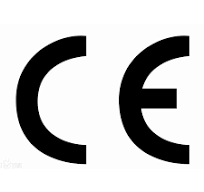-
About us
-
Product
-
News&Events
Understanding the Materials Behind EMS Fat Burning Machines
2025-05-17
The EMS (Electrical Muscle Stimulation) fat burning machine is gaining popularity in the medical and wellness sectors for its innovative approach to muscle training and fat reduction. One of the key factors that contribute to the effectiveness and reliability of these devices is the materials used in their construction. Understanding these materials not only helps in evaluating the machine's performance but also informs best practices for maintenance and safety.
Typically, EMS fat burning machines incorporate a variety of materials, each selected for specific properties that enhance the machine's functionality. The most common materials found in these devices include high-grade plastics, aluminum, and silicone.
High-grade plastics are often utilized for the outer casing of EMS machines. These plastics are lightweight yet robust, providing the necessary durability for frequent use in clinical settings. Moreover, they are resistant to moisture and easy to clean, which is crucial for maintaining hygiene standards in medical equipment.
Aluminum is another prevalent material, particularly in the internal framework and components of EMS machines. Its strength-to-weight ratio makes it an ideal choice for reinforcing the structure without adding unnecessary bulk. Additionally, aluminum has excellent thermal conductivity, which can be beneficial for managing heat generated during prolonged use.
Silicone is commonly used for the pads that come into contact with the skin. These pads need to be not only comfortable but also capable of effectively transmitting electrical impulses. Silicone's biocompatibility and flexibility ensure that the pads conform well to various body shapes and sizes, enhancing patient comfort and treatment efficacy. Furthermore, silicone is known for its longevity and resistance to degradation, making it a cost-effective choice in the long run.
When selecting an EMS fat burning machine, it is essential to consider the quality of these materials. High-quality components not only contribute to the machine's performance but also ensure that it meets safety standards necessary for medical equipment. Users should be mindful of potential allergic reactions or skin sensitivities associated with materials like silicone, ensuring that the device is compatible with a wide range of individuals.
In conclusion, the materials used in EMS fat burning machines play a crucial role in their overall performance, durability, and user safety. By understanding the significance of materials—such as high-grade plastics, aluminum, and silicone—professionals in the medical field can make more informed decisions when selecting and utilizing these devices. Proper material knowledge enhances the user experience and optimizes treatment outcomes, contributing to the growing acceptance of EMS technology in health and wellness applications.
Typically, EMS fat burning machines incorporate a variety of materials, each selected for specific properties that enhance the machine's functionality. The most common materials found in these devices include high-grade plastics, aluminum, and silicone.
High-grade plastics are often utilized for the outer casing of EMS machines. These plastics are lightweight yet robust, providing the necessary durability for frequent use in clinical settings. Moreover, they are resistant to moisture and easy to clean, which is crucial for maintaining hygiene standards in medical equipment.
Aluminum is another prevalent material, particularly in the internal framework and components of EMS machines. Its strength-to-weight ratio makes it an ideal choice for reinforcing the structure without adding unnecessary bulk. Additionally, aluminum has excellent thermal conductivity, which can be beneficial for managing heat generated during prolonged use.
Silicone is commonly used for the pads that come into contact with the skin. These pads need to be not only comfortable but also capable of effectively transmitting electrical impulses. Silicone's biocompatibility and flexibility ensure that the pads conform well to various body shapes and sizes, enhancing patient comfort and treatment efficacy. Furthermore, silicone is known for its longevity and resistance to degradation, making it a cost-effective choice in the long run.
When selecting an EMS fat burning machine, it is essential to consider the quality of these materials. High-quality components not only contribute to the machine's performance but also ensure that it meets safety standards necessary for medical equipment. Users should be mindful of potential allergic reactions or skin sensitivities associated with materials like silicone, ensuring that the device is compatible with a wide range of individuals.
In conclusion, the materials used in EMS fat burning machines play a crucial role in their overall performance, durability, and user safety. By understanding the significance of materials—such as high-grade plastics, aluminum, and silicone—professionals in the medical field can make more informed decisions when selecting and utilizing these devices. Proper material knowledge enhances the user experience and optimizes treatment outcomes, contributing to the growing acceptance of EMS technology in health and wellness applications.
 |
 |
 |
 |
Contact us
ADD:2rd floor, Building No.7, Maohuagongchang, Nancaizhen, Shunyi District, Beijing, China.
Phone:0086-15210506323
Whatsapp:0086-15210506323
Email:nancy@sanhebeauty.com
© COPYRIGHT 2024 Sanhe Beauty S & T Co.,Ltd ALL RIGHTS RESERVED Powered by : www.300.cn SEO
Business license

MESSAGE




